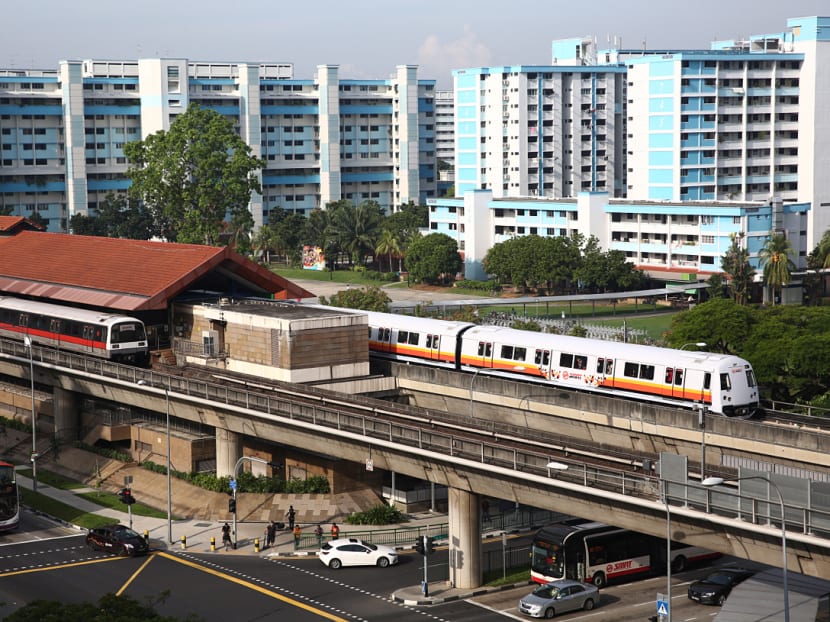Track faults cause peak-hour delay on NSL, EWL
SINGAPORE – The morning rush-hour commute yesterday was hit by delays on both the North-South Line (NSL) and the East-West Line (EWL), with a track fault at Khatib station on the NSL taking more than five hours to resolve.
SINGAPORE – The morning rush-hour commute yesterday was hit by delays on both the North-South Line (NSL) and the East-West Line (EWL), with a track fault at Khatib station on the NSL taking more than five hours to resolve.
The second reported track fault at Simei station on the EWL took more than two hours to clear, and caused delays of between five and 20 minutes to commuters.
Mr Patrick Nathan, vice-president of corporate information and communications for rail operator SMRT, said in a statement that track circuit faults occurred on both lines. This resulted in trains “having to travel at a slower speed for commuter safety”.
He assured the public that “faulty track circuits will no longer cause prolonged delays for commuters” once a new signalling system is in place.
SMRT has been testing the new system on the NSL.
As part of the plan, ageing track circuits would be replaced with a more advanced system “for greater reliability”, Mr Nathan added.
“After we renew the signalling system, faulty track circuits will no longer cause prolonged delays for commuters.”
Originally scheduled to be rolled out by the end of last year, the new system needs more testing to ensure its reliability, the Land Transport Authority (LTA) and SMRT said previously.
Tuesday's (April 18) train delays first began at about 7.20am, when SMRT tweeted that a train fault at Khatib station was affecting services between Bishan and Khatib stations.
The initial travel delay of about 10 minutes grew to 20 minutes around 8.50am. The duration of this delay shortened over time, but the track fault was not cleared until 12.40pm — more than five hours after it was first reported.
Over at the EWL, SMRT alerted commuters to a track fault problem at 8.35am, and for them to expect a 10-minute delay while travelling between Paya Lebar and Simei stations. The expected travel delay increased to 15 minutes at around 9.20am.
SMRT took more than two hours to clear the track fault on the EWL, and reported that it was resolved at around 11am.
The NSL and EWL are the oldest rail lines in Singapore.
The LTA and SMRT have been making efforts to rejuvenate the ageing rail network, and part of this involves introducing the new signalling system.
Test runs of the new system had been conducted during off-service hours since last August.
Last month, the LTA and SMRT began testing during the final hour of train services on the NSL.
Done over 10 nights during weekdays, the trials required trains to stop for about 10 minutes for the signalling switchover, and were largely successful.
The trials will now be conducted during service hours on Sundays starting this week.
The plan is to run these Sunday trials over two months, and more trains will be involved (up to 41).
During the earlier trials on weekday nights, more than 30 trains were part of the test.
The trials’ results will help the LTA and SMRT decide when to make the new system fully operational. The authorities also want to monitor the system’s response to various situations and track how train services follow schedules.
The new system will allow trains to run at shorter intervals.
During peak hours, commuters can expect to wait up to 100 seconds, instead of 120 seconds now, which will ease congestion and allow faster trips.
The new system is also expected to improve rail reliability, since critical components are duplicated as back-up.
Under the new system, train doors open and close automatically, unlike now where train drivers control the doors manually.
Just over the weekend, the first of 57 new trains fitted with the new signalling system started running all day on the NSL.
It will run every Sunday in tandem with the Sunday trials of the new signalling system.
These new trains will also have features such as enhanced information display about upcoming stops, energy-saving LED lights, and marked spaces in cabins for wheelchair users.
They are to be added to the NSL and EWL progressively until 2019.







